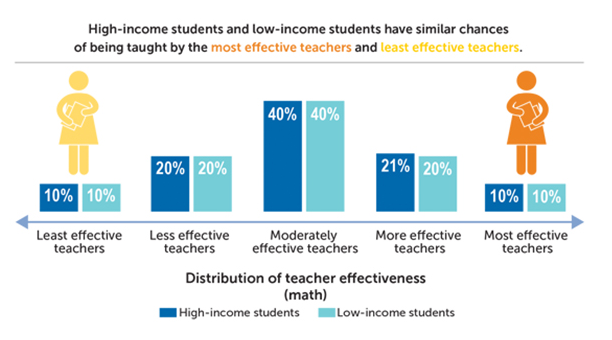For decades, education researchers have concluded that low-income students are taught by less effective students than their higher-income counterparts. These differences are then used to explain why there is an achievement gap between the two groups.
A new study, sponsored by the U.S. Department of Education’s Institute of Education Sciences and conducted by Mathematica Policy Research, found that there was little difference in teacher quality in the 26 districts selected for the five-year study, although students in three of the districts had inequitable access to math teachers.
 Moreover, researchers found that “attrition patterns do not contribute to differences in the effectiveness of teachers of high- and low-income students.” In other words, the movement of teachers from low-income to higher-income schools does not necessarily reduce the effectiveness of teachers in the low-income schools.
Moreover, researchers found that “attrition patterns do not contribute to differences in the effectiveness of teachers of high- and low-income students.” In other words, the movement of teachers from low-income to higher-income schools does not necessarily reduce the effectiveness of teachers in the low-income schools.
Coincidentally, the N.C. Department of Public Instruction just released The State of the Teaching Profession Report. Many of the state’s low-income districts had significantly higher teacher turnover than the average North Carolina district. Halifax, Northampton, Thomasville City, Lexington City, and Hoke had the highest total attrition rates in the state. While challenging and costly, one should not conclude that these districts will necessarily have less effective teachers as a result.
